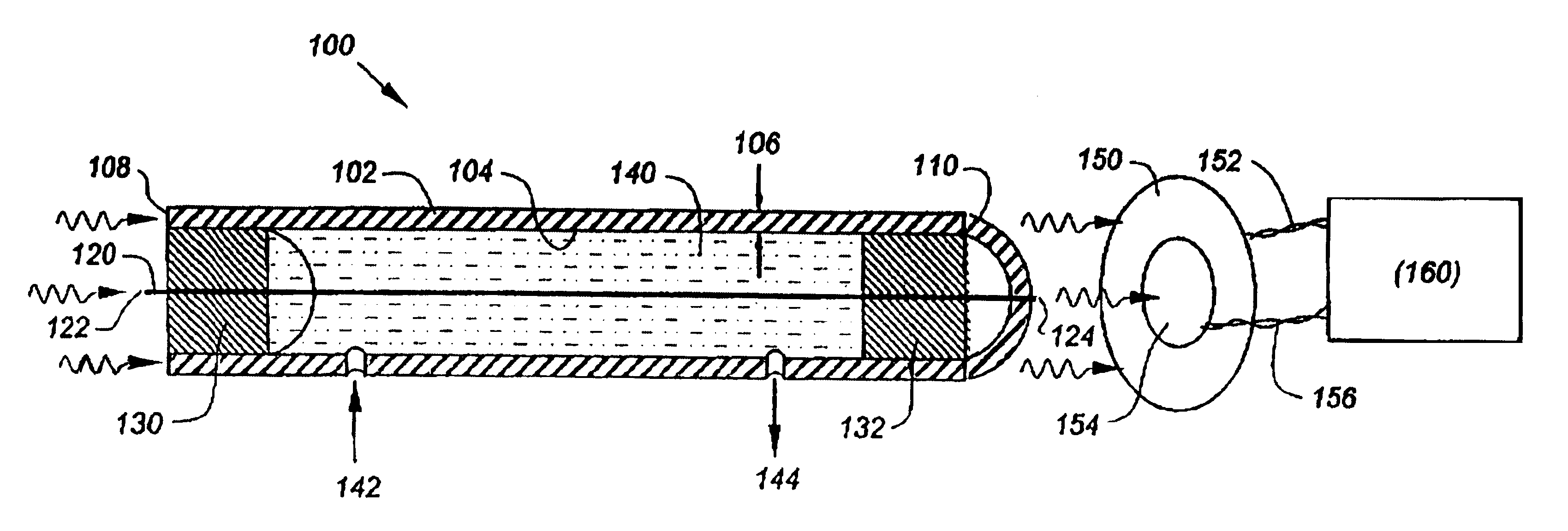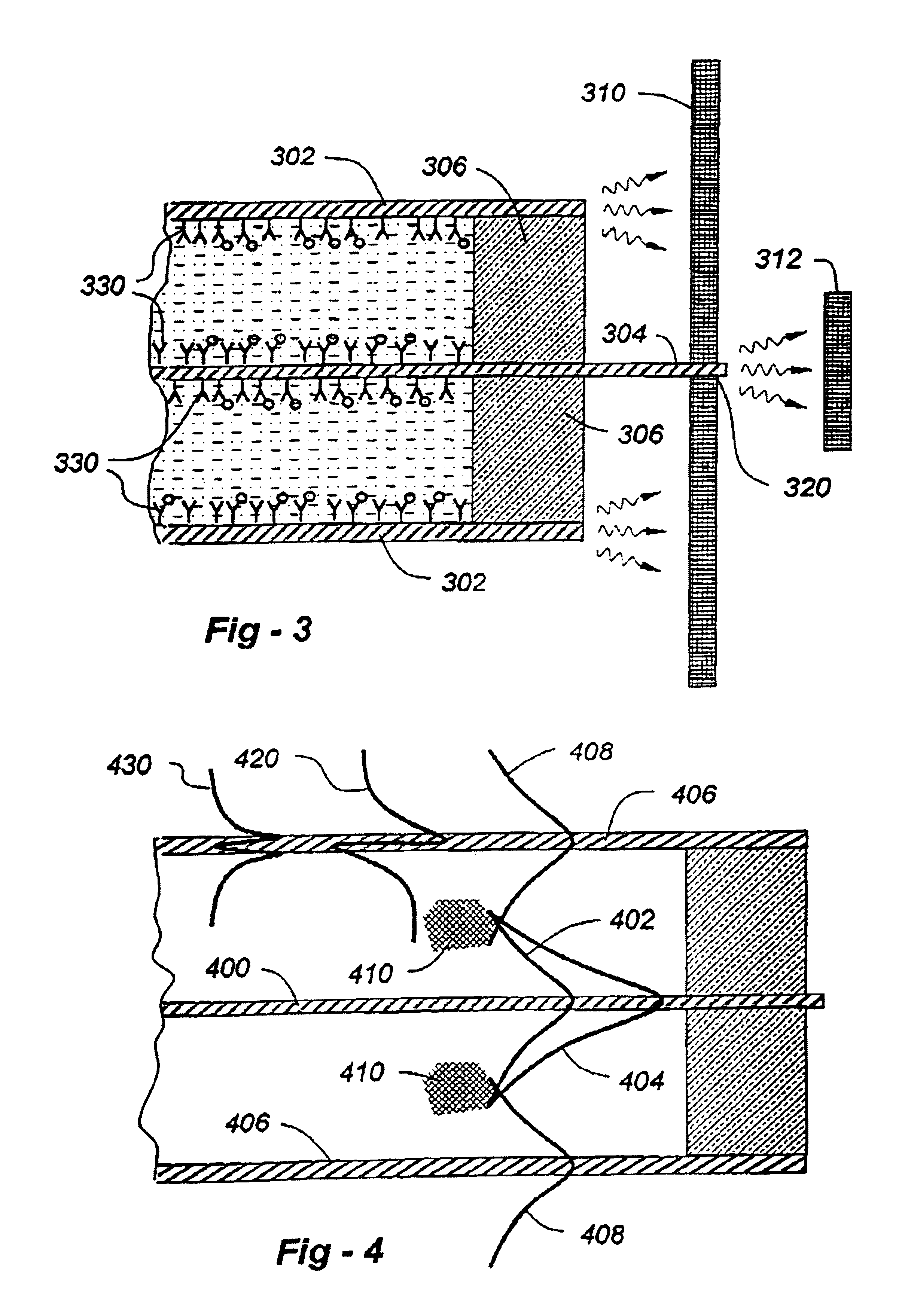Coupled capillary fiber based waveguide biosensor
a biosensor and capillary fiber technology, applied in the field of waveguided biosensors, can solve the problems of inability to achieve large-scale production, limited application of optical characteristics and amenity to large-scale production, and inability to achieve irreproducible operational characteristics, etc., to achieve the effect of minimizing optical modal interferen
- Summary
- Abstract
- Description
- Claims
- Application Information
AI Technical Summary
Benefits of technology
Problems solved by technology
Method used
Image
Examples
Embodiment Construction
[0029]Reference is now made to FIG. 1, which is a drawing used to illustrate important structures and functional operation according to the invention. The basic configuration, shown generally at 100, includes an optically conductive hollow waveguide 102 and a second waveguide 120 supported therewithin. The hollow waveguide 102 has a light-input end 108, and a light-output end 110, and a wall having a thickness 106 and an inner surface 104. Likewise, the second waveguide 120, features a light-input end 122, a light-output end 124, and an outer surface generally facing the inner surface 104 of the hollow waveguide 102.
[0030]In the preferred embodiment, the hollow waveguide 102 is a glass capillary, and the second waveguide 120 is an optical fiber. Conveniently, the waveguide 120 may be held in position using ferrules 130 and 132 which seal against the inner wall 104 of the waveguide 102, and have central apertures through which the waveguide 120 may be threaded. Preferably, the wavegu...
PUM
| Property | Measurement | Unit |
|---|---|---|
| wall thicknesses | aaaaa | aaaaa |
| outer diameter | aaaaa | aaaaa |
| thickness | aaaaa | aaaaa |
Abstract
Description
Claims
Application Information
 Login to View More
Login to View More - R&D
- Intellectual Property
- Life Sciences
- Materials
- Tech Scout
- Unparalleled Data Quality
- Higher Quality Content
- 60% Fewer Hallucinations
Browse by: Latest US Patents, China's latest patents, Technical Efficacy Thesaurus, Application Domain, Technology Topic, Popular Technical Reports.
© 2025 PatSnap. All rights reserved.Legal|Privacy policy|Modern Slavery Act Transparency Statement|Sitemap|About US| Contact US: help@patsnap.com



